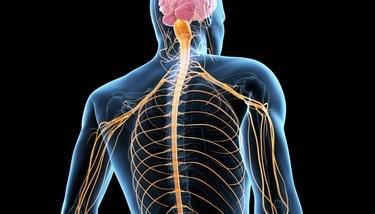
The spinal cord stands as a fundamental component within the central nervous system, facilitating essential communication channels between the brain and the body. Its intricate structure and multifaceted functions make it a critical player in human mobility, sensation, and overall bodily function.
Anatomy and Structure:
Encased protectively within the vertebral column, the spinal cord takes the form of a lengthy, cylindrical bundle of nerves, spanning from the base of the brain down to the lower back. Comprising millions of nerve fibers, or axons, the spinal cord serves as a conduit for electrical impulses. These axons are meticulously organized into tracts, each dedicated to carrying specific types of information, ensuring the seamless transmission of signals.
Function and Communication:
Acting as a pivotal link connecting the brain to the peripheral nervous system, the spinal cord orchestrates the relay of signals to and from various parts of the body. Sensory data, encompassing sensations like temperature, pain, and touch, travel from the body to the brain through the spinal cord. In parallel, motor signals originating in the brain journey down the spinal cord, initiating purposeful movements.
Moreover, the spinal cord assumes a vital role in reflex actions, showcasing its remarkable ability to coordinate rapid responses without conscious intervention. For instance, when a hand touches a hot stove, sensory signals rush to the spinal cord, triggering an immediate motor response that retracts the hand, safeguarding the individual from harm.
Injury and Impairment:
Regrettably, spinal cord injuries can have devastating consequences, profoundly impacting an individual's life. Such injuries often lead to partial or complete loss of sensory and motor functions beneath the site of injury. The severity and location of the damage dictate the extent of impairment. Injuries higher up the spinal cord can result in paralysis of the limbs and a loss of control over basic bodily functions, dramatically altering the affected person's quality of life.
Research and Treatment:
In the realm of medical science, ongoing research efforts are making significant strides in understanding and treating spinal cord injuries. Innovative approaches, including stem cell therapy, electrical stimulation, and neurorehabilitation techniques, are being explored to promote nerve regeneration and functional recovery. These cutting-edge methodologies aim to bridge the gaps in damaged neural pathways, facilitating the restoration of lost capabilities.
Furthermore, recent years have witnessed groundbreaking advancements in technology. Exoskeletons, wearable robotic devices, enable individuals with spinal cord injuries to regain mobility and independence. Brain-computer interfaces, another revolutionary development, establish alternative communication pathways between the brain and the body, bypassing the damaged spinal cord. These technologies hold immense promise, offering newfound hope to those affected by spinal cord injuries, heralding a future where mobility and autonomy can be restored to previously unimaginable extents.
Conclusion:
The spinal cord is an incredible structure that enables the complex communication between our brain and body. It plays a critical role in our ability to move, perceive sensations, and respond to the environment. While spinal cord injuries can have profound consequences, ongoing research and advancements in medical technology offer hope for improved treatments and ultimately, a better quality of life for those affected.
References: